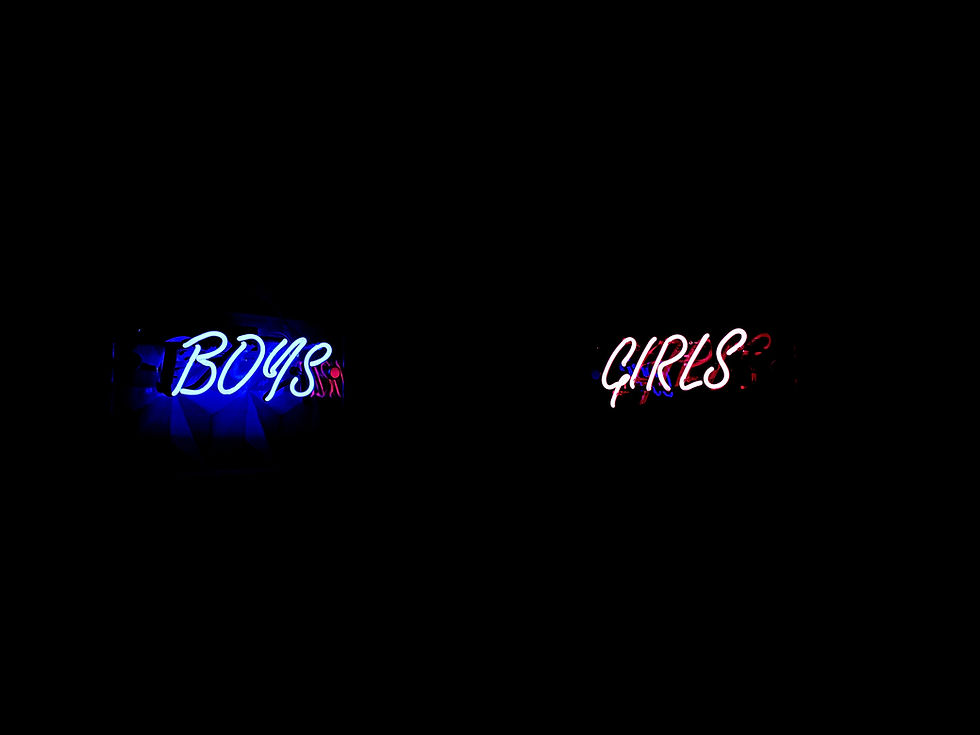
The rigid reality of gender roles
From the very day we were born, we were assigned gender roles. Pink for a girl, blue for a boy. Boys play with toy cars, miniature tool kits, and plastic guns shooting foam bullets. Little girls play with kitchen sets, makeup, and dolls with blue eyes and blonde hair. Gender reveal parties are becoming increasingly popular in the UK, where confetti cannons announce the sex of a child with a pop of coloured confetti.
But what about those who can’t be reduced to a simple colour? For those of us that have slipped through the cracks of the gender binary, fashion can be a saving grace of self-expression. Being able to dress ourselves is the first opportunity we get to show the world exactly who we are. Breaking free of the rigid constraints of gendered childhood clothing can be a rite of passage for young queers, particularly the trans community, looking to experiment with gender and sexuality.
Fashion, pop culture and gender norms
Our taste in fashion can often feel like the only thing we have control over, and has been part of some pretty significant moments in history. Take Queen’s “I Want To Break Free” music video for example. A great video with all members of the band in full drag, complete with high heels and fake boobs. A genius parody of the typical housewife, that was well received with British humour charting at Number 3 in the UK.
However, there was less success in a more conservative USA. MTV were reluctant to play the video because it was seemingly a little too gay for America to handle. Disappointingly, it only reached Number 45 in the hot 100, and guitarist Brian May believes that it permanently impacted the bands reputation in the States. And there was more backlash to come; in a 1985 concert in Rio, Freddie Mercury changed into his signature attire for the song, the usual wig and fake boobs. The crowd, one of Queen’s biggest, pelted him with stones and beer cans, amongst other things.
In recent times, people are beginning to adopt a more open concept of gender. More and more red carpet looks are gender fluid, with many attendees choosing to challenge gender norms. Queer celebrities such as Emma Corrin, Lil Nas X, Olly Alexander, and Billy Porter have all worn clothes that send a powerful message to those trying to define them with labels.
In perhaps a more surprising display of fashion, Everton footballer, Dominic Calvert-Lewin has been donning some majorly cool outfits recently. He appeared on the cover of Arena Homme +, sporting a sharp schoolgirl look complete with shirt, tie, and flared shorts that could easily be mistaken for a skirt. To complete the look, stylist Harry Lambert topped it off with white socks, black loafers, and a sparkly pink Prada bag. This has caused quite a stir within the football community, with many fans mocking Calvert-Lewin for his bold choices of clothing. But this is something to be excited about; a person coming from the male dominated, hypermasculine world of sport sharing a side of them that doesn’t fit the ‘ideals’ set out for them by society.
Extending this beyond the queer community opens a gateway for freedom of self-expression, regardless of sexual orientation - paving the way for a more open and honest future for fashion and gender identity.
It's NOT a phase, Mom!
Whilst significant breakthroughs within fashion are being made all the time, and gender fluidity is an undeniably cool look, it’s important to take note of those who have existed long before it was popular to dress or behave a certain way. I recommend you take a look at some of these people throughout history who have been breaking down barriers (probably) since before you were born.
It's important that moving forward, the fashion industry creates spaces for people to browse and buy gender neutral clothing - without the pressure of labels. Saying this, gender experimentation is more than just skin deep, and it’s way more than just another trend for brands to capitalise on. Fashion has been a part of so many iconic moments throughout history, particularly queer history. So yes, it’s fair to say that clothing is a pretty vital tool when it comes to showing who we are, and what we stand for.
Comments